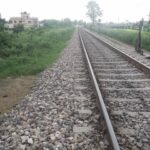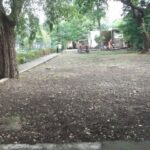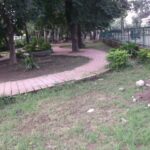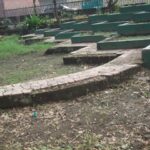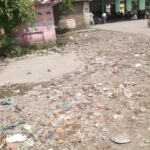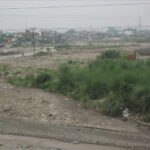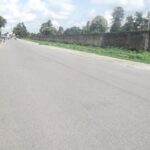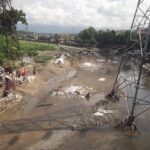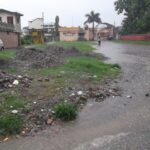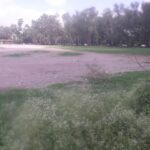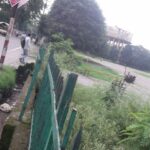PREPARATION OF PERSPECTIVE PLANS AND MICRO PLANS
PREPARATION OF PERSPECTIVE PLANS AND MICRO PLANS UNDER GREEN INDIA MISSION PROJECT OF UTTARAKHAND FOREST DEPARTMENT FOR 10 URBAN AND PERI URBAN CITIES IN UTTARAKHAND
INTRODUCTION AND BACKGROUND OF THE PROJECT
The National Mission for a Green India is an integral component of the National Action Plan on Climate Change (NAPCC), consisting of eight Missions. The Green India Mission (GIM) is a comprehensive, multi-stakeholder, multi-sectoral, and multi-departmental initiative aimed at mitigating and adapting to climate change. GIM recognizes that the impact of climate change on the distribution, nature, and quality of natural resources, as well as people’s associated livelihoods, is substantial. GIM’s goal is to promote “greening” within the context of climate change adaptation and mitigation by improving ecosystem services such as carbon sequestration and storage (in forests and other ecosystems), hydrological services, and biodiversity, as well as provisioning services like fuel, fodder, small timber, and non-timber forest products (NTFPs). It aims to increase forest and tree cover on 5 million hectares of forest/non-forest lands, improve forest cover quality on an additional 5 million hectares of forest/non-forest lands, enhance ecosystem services, increase the forest-based livelihood income of around three million households, and increase annual CO2 sequestration.
As part of the Green India Sub-Mission 3 in Uttarakhand, the Perspective Plan for Urban and Peri-Urban Areas of Uttarakhand is to be developed. HIFEED has been tasked with collecting data and information to formulate a perspective plan for urban forestry in ten selected cities. The Forest Department has proposed the conservation of existing greenery and the development of urban greenery in industrial premises, institutional lands, community/public lands, residential colonies, roadsides, railway lines, and other barren and degraded lands. The goal is to cover roughly 2000 hectares of land in these cities.
AIMS AND OBJECTIVES OF THE PROJECT
1. Determine the total geographical area encompassing the ten designated cities.
2. Evaluate areas conducive to plantation and greening initiatives within the jurisdictions of Municipal Corporations, Municipalities, and Cantonment Boards.
3. Classify land ownership across diverse categories, encompassing residential, institutional, industrial, and public lands owned by state and central governments, local authorities, schools, and trusts.
4. Mark out significant roadways, railway lines, and canals that offer potential for greening and plantation efforts within the urban settings.
5. Examine proposed green zones put forth by relevant statutory bodies, such as town planning authorities, along with the associated cartographic representations.
6. Conduct on-site field surveys and reconnaissance activities within the selected cities to pinpoint suitable areas for plantation and greening endeavours.
7. Identify existing green belts that warrant preservation or enhancement to further their environmental value and impact.
COMPONENTS AND ACTIVITIES OF THE PROJECT
1. Formulate an Urban Forest Master Plan to effectively manage and expand the tree canopy within each urban area.
2. Cultivate engagement and collaboration among stakeholders in tree care and preservation, fostering a shared vision for the future of the urban forest.
3. Collect data from primary and secondary sources to inform the perspective plans for the ten designated cities.
4. Incorporate detailed maps highlighting major potential sites for greening initiatives and provide a tabular breakdown of key stakeholders involved.
5. Evaluate institutional and administrative spaces, including schools and government offices, as well as smaller areas suitable for greening efforts.
6. Identify public access and utility areas, such as parks and gardens, that present opportunities for greening enhancement.
7. Identify suitable locations along road sides, railway lines, canal banks, and river embankments for linear planting, outlining the recommended number of trees per kilometre.
TARGET AREA OF THE PROJECT
The project centers its attention on a particular region within Uttarakhand, encompassing 10 cities. These cities comprise Dehradun, Vikas Nagar, Rishikesh, Haridwar, Roorkee, Kotdwar, Srinagar, Nainital, Haldwani, and Rudrapur.
TARGET GROUPS AND BENEFICIARIES OF THE PROJECT
The project’s beneficiaries encompassed the entire community residing in the 10 cities of Uttarakhand, namely Dehradun, Vikas Nagar, Rishikesh, Haridwar, Roorkee, Kotdwar, Srinagar, Nainital, Haldwani, and Rudrapur. This inclusive approach involved a diverse range of stakeholders, comprising residents, business owners, institutions, and government bodies.
FUNDING PARTNER OF THE PROJECT
The funding for the assignment was provided by NABARD Consultancy Services (NABCONS/NABARD), Dehradun, Uttarakhand. NABCONS/NABARD supported the project in collaboration with the Principal Chief Conservator of Forest (PCCF), Projects, Department of Forests, Government of Uttarakhand, Dehradun.
SANCTIONED BUDGET OF THE PROJECT
The funding for the project was granted by NABCONS in the year 2013, with the sanction order No. NABARD (Uttarakhand)/NABCONS (GIM)/2013-14 dated 31.05.2013. The total budget for the project was set at Rs. 1,87,500.00 by NABCONS. This sanctioned budget was allocated for a period of twenty days, during which the project was expected to be completed.
OUTCOMES AND ACHIEVEMENTS OF THE PROJECT
The outcomes and achievements of the assignment after successful implementation are as follows:
1. The project has identified the total geographical area of the ten selected cities and determined suitable areas for plantation/greening within Municipal Corporations/ Municipalities and Cantonment Boards.
2. Land ownership has been categorized into various categories such as residential, institutional, industrial, and public lands, including those under state government, central government, local authority, schools, and trusts.
3. Major roads, railway lines, and canals that have the potential for greening/plantations within the cities have been plotted.
4. The green zones proposed by statutory authorities for the cities have been reviewed, including associated maps.
5. Field surveys and reconnaissance of the ten cities have been conducted to determine areas suitable for plantation/greening and to identify existing green belts that require protection or enhancement.


